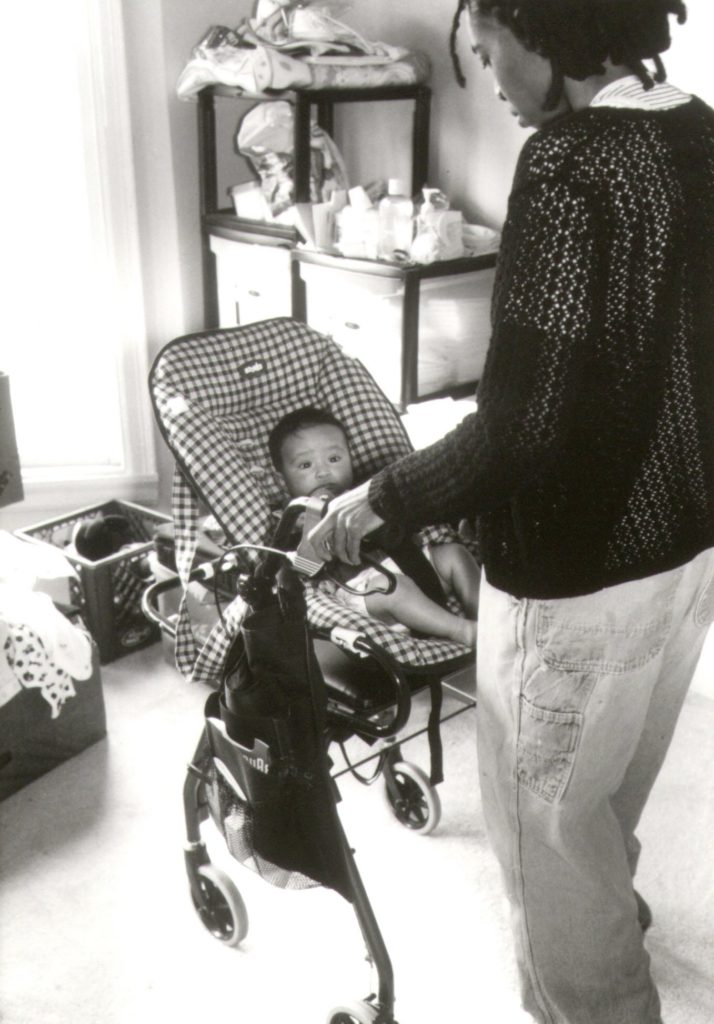TLG’s Adaptive Babycare Services
Through the Looking Glass has been providing adaptive babycare services for parents and caregivers with physical and vision disabilities for more than 30 years. Our approach evolved from video-based research on the strategies that parents with disabilities had developed to take care of their babies. Building on these successful and creative strategies, TLG has developed techniques and adaptive equipment (such as a lifting harness and adapted cribs) that maximize safety and accessibility, and reduce caregiver pain and burden. TLG provides services to parents and caregivers with a wide variety of functional or medical challenges, including new or on-going, stable, progressive, or varying disabilities, physical differences, or medical conditions.
Difficulties participating in child caregiving tasks can have a significant impact on parent stress, well-being, and mental health. Adaptive Baby Care services are available for parents and caregivers who are experiencing barriers in caring for their children in the ways that they wish.
Our services are highly individualized to each parent. Our occupational therapists take their time to get to know each family, understand their goals for parenting, and provide specific techniques, strategies, and equipment to help parents care for and enjoy their children.

Services and equipment are provided at no cost to families enrolled in TLG’s Early Head Start program. Depending on grant funding, services and equipment may be available free of charge to other residents of Alameda and Contra Costa counties. TLG is also able to provide fee-based services on a sliding scale. Fee-for-service telehealth-based consultation is available to families in California who are outside the San Francisco East Bay area.
What can I buy on the market to help me take care of my baby and myself?
This chart was created as a guide to what may be purchased and used by parents and caregivers with disabilities to care for a child from birth to 3. Guided by principles of universal design, we looked for equipment that can be used by caregivers with or without a disability and across a wide range of disabilities.